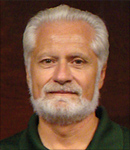Every week, Eversource Energy plans approximately 40,000 hours of work for 410 crews across 40 work centers serving 3.4 million customers in Connecticut, Massachusetts, and New Hampshire. Historically, the vast majority of that work was planned manually – leveraging a combination of work management systems and paper-based job packets. But as new technologies have emerged, the company sought a better way to plan and manage work – a way that would drive efficiency and consistency and ultimately, deliver better service for customers.
“Data drives so much of what we do today, and our employees and our customers have higher expectations for the kind of information we’re able to provide,” said Steve Gilkey, vice president of Electric Field Operations for Eversource Energy. “That’s why we implemented an automated crew management system – creating greater visibility for our leadership into crew operations and eliminating the inefficiencies of a paper-based system that could create delays for customers.”
Eversource recently used a program known as Crew Manager to automate the process of planning and managing work for line crews. Now, rather than waiting to be provided with a stack of paper work packets each morning, line crews arrive to work each day and see an 80-inch smartboard displaying which truck they’re on, which crew they’re part of, and any customer appointments they have scheduled that day.
“Like many utilities, Eversource relied on a combination of work management programs and paper work packets to plan work,” said Mike Brubaker, vice president of sales for ARCOS LLC. “Each planning period, the optimized work packets would be released to the area work centers. Unfortunately, the plan sometimes ran into the realities of daily utility work. Crew Manager allows the latest resource management information to be part of the planning process, including who may be gone this morning due to callout last night, re-allocated to different areas, ‘crewed up’ differently based on need or mobilized for a major storm event.”
By using the Crew Manager solution to schedule work and the make-up of crews, Eversource has increased its work schedule maximization rates, and completion rates for planned work have climbed more than 10 percent companywide. The program has also helped supervisors from different states and work locations share best practices, and identify ways to plan and manage work more efficiently.
To boost productivity, Eversource wanted every supervisor to know how his or her peers organized and dispatched crews. In the past, one work center might assign a three-person crew to a particular kind of job that another work center handled with two lineworkers. By displaying this information in Crew Manager for all crews and managers to see, supervisors can now collaborate on how to “right-size” crews for the job.
“I was balancing time between sending out reports and queuing up crews. It could take me one to two hours per day to deal with changes in jobs and the make-up of crews as well as coordinating it with my planner,” said Frank White, a supervisor for overhead distribution lines at Eversource. “That extra time has given us a way to do more on-site supervising.”
Since all 40 work centers are using the same technology, supervisors also have greater insight into what works best in terms of how to plan and schedule crews and resources. Managers and directors can see which trucks the crews are using on certain jobs, and determine if the crews are accomplishing jobs with, for instance, fewer vehicles. This helps operations management decide if some of the equipment on the property can be better used or redistributed.
That type of resource management is especially useful during major storm restoration. Prior to implementing a single automated system, Eversource relied on resource management software to track crews for major events. As managers moved into storm mode, the utility would have supervisors call and fax dispatchers to obtain storm mode layouts.
“In the past, when a storm was forecast, people would have to pull out an instruction book to refresh their memory about how to use the resource management tool,” added White. “What we were looking for – and what we found with Crew Manager – was a system for everyday use, so the transition to storm mode is effortless.”
Since implementing the new crew management system for storms, dispatchers and supervisors can see crew data and assignment scenarios as storms approach. And, when faced with a forecasted storm, executives can immediately see if each area has responded properly to resource requests.
“If we need 25 crews covering the state by 4 p.m., we can see that in Crew Manager,” said Gilkey. “The technology helps us avoid making a half-dozen phone calls to verify it’s happened.”
This same information is readily available to the dispatch center on their display screens. Even after hours, Eversource can see via the new crew management system how much of its workforce is on the property. This approach provides Eversource a data resource beyond just employee scheduling. If there is a need to optimize the fleet, Eversource can drill into how each center is using the fleet as well as their approach to “crewing.” This data is used with confidence to standardize the disbursement of various types of vehicles and equipment.
The information helps the company decide if some equipment on the property isn’t necessary, which can lead to retiring assets. In the wake of major outages, Crew Manager provides a look back at specific days, hours or minutes to see the location of crews and what they worked on. For any storm, managers can precisely determine how many crews were on the system, which increases confidence when presenting storm cost recovery information. The end result is a more efficient workforce, during normal blue-sky days, and during storm response, when efficiency and productivity is perhaps most critical.
“When we know where a crew is and what they are doing, including the details, we can improve response time and restoration for our customers,” said White.
About the Author
 Dennis Desrosiers is the business integration manager for Eversource Energy. Desrosiers’ 25-year career at Eversource includes roles in the Nuclear Generation, Engineering and Transmission & Distribution business units. Currently, he is responsible for the support and training of numerous operations technologies including the callout system and outage management system. Desrosiers received a bachelor’s degree in civil engineering from the University of Massachusetts, Dartmouth and a Project Management Certificate from Boston University. Contact him at dennis.desrosiers@eversource.com.
Dennis Desrosiers is the business integration manager for Eversource Energy. Desrosiers’ 25-year career at Eversource includes roles in the Nuclear Generation, Engineering and Transmission & Distribution business units. Currently, he is responsible for the support and training of numerous operations technologies including the callout system and outage management system. Desrosiers received a bachelor’s degree in civil engineering from the University of Massachusetts, Dartmouth and a Project Management Certificate from Boston University. Contact him at dennis.desrosiers@eversource.com.







